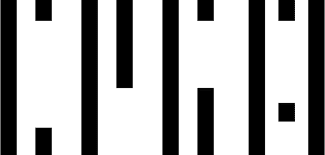Spanish
120 pages
The ambiguous, the impalpable; mysterious beings, the representation of dreams; the body as a metaphor for the place that women occupy in the world and the critique of the patriarchal model of representation; spirituality; one's own culture felt as a source of investigation and the acquired culture as a starting point; oriental evocation as a mythological reservoir; the human, the vegetal, and the mineral dissolved in an animist catalog, penetrated by life and will; simplicity, the idea of formal emptiness and conceptual fullness... Everything that shapes Leiko Ikemura's work in her sculptures, ceramics, projections, drawings, and paintings converges in a unique and integrated setting, designed by the artist as a gigantic installation traversed by natural light and by the interaction of the various elements that articulate the exhibition.
Ikemura, who herself exemplifies this cultural amalgamation between two worlds seemingly so distant as the West and the East, demands through her work the need for shared values with everything that surrounds us. Her drawings, watercolors, and sculptures transubstantiate their condition as simple artistic supports into a new territory where the conventional is suspended. As close to the metaphysical as to the oneiric, the evanescent forms of her painting merge into an equally incorporeal background from which they soon emerge. The landscapes suggest an unfinished narrative to which the audience must contribute with their determination. The female figures renew their anthropomorphic condition to become the indispensable protagonists. Fragile, almost untouchable, the artist claims for them a vulnerability that she understands as one of the most honest forms of expression and with which, in her own words, she questions "the allegorical representation that art history has erected around the reality of women."
Poetry is also not foreign to Ikemura's work (she is the author, among many other publications, of the poetry collection Umi no ko, published in 2006), decisively present in every choice, in every color, in every stroke, in the handling of light, in the atmospheric softness with which she envelops her work in a sort of calculated fog. Leiko Ikemura composes for the Centro de Arte Caja de Burgos CAB a call for attention on an increasingly suffocating society through a calm work, a reflection of the artist's personality, but in which it falls upon the viewer to bring mystery to the narration and turn it into something fantastic or, on the contrary, keep it in the realm of reality.



